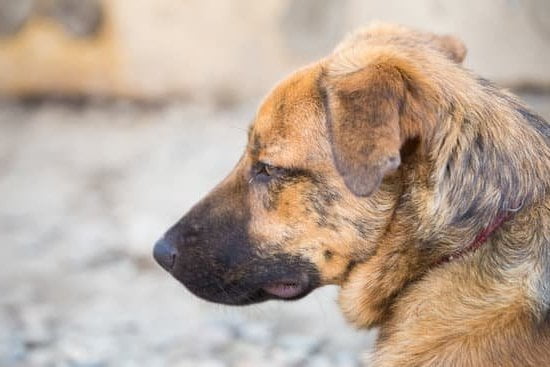Litter training is often associated with cats, but can small dogs also be trained to use a litter box? If you’re a small dog owner who’s tired of constant potty breaks and accidents indoors, then this article is for you.
Litter training small dogs can be a game-changer, offering numerous benefits for both you and your furry friend. In this article, we will explore the advantages of litter training and address common challenges faced in potty training small dogs.
Potty training can be especially challenging for small dog owners. Their tiny bladders require more frequent bathroom breaks, making it difficult to maintain a consistent routine. Additionally, many small dogs are known for their stubbornness and independence, which can further complicate the training process. This is where litter training comes into play – it provides an alternative solution to traditional outdoor potty habits that may not always be practical or convenient.
By litter training your small dog, you’ll enjoy several benefits. Firstly, it allows your pet to relieve themselves indoors without the need for constant trips outside. This can be particularly advantageous if you live in an apartment or have limited outdoor space.
Moreover, litter trays are easily accessible and can be placed in designated areas within your home, providing convenience and maintaining cleanliness. Additionally, litter training helps reduce the risk of accidents on carpets or furniture, saving you from potential damage or costly cleaning expenses.
In the following sections of this article, we will delve deeper into the world of litter training for small dogs. We will address common misconceptions about whether it’s possible to train them like cats and highlight the natural instincts that make them suitable candidates for litter training.
Furthermore, we will provide step-by-step guidance on choosing the right litter box and take you through a comprehensive training process accompanied by positive reinforcement techniques. So let’s dive in and explore the possibilities of litter training for small dogs.
Understanding the Basics
Addressing the misconception that only cats can use litter boxes, it is important to understand that small dogs can indeed be litter trained. While litter training is more commonly associated with cats, the natural instincts of small dogs make them well-suited for this type of potty training.
Small dogs, like their larger counterparts, have an instinct to eliminate in a designated area. By harnessing this instinct and providing them with a suitable alternative to outdoor pottying, small dogs can easily adapt to using a litter box.
One of the primary reasons small dog owners may choose to litter train their pets is convenience. Small dogs often struggle with traditional potty training methods due to their size, making it challenging for them to hold it until they are taken outside. Additionally, some small dogs are not able to handle extreme weather conditions or may live in apartments or homes without immediate access to outdoor areas.
By introducing a litter box into their daily routine, small dog owners can alleviate these challenges and provide their pets with a consistent and accessible spot for elimination. Litter training also offers peace of mind for pet owners who are away from home for long periods or have busy schedules, as they know their dog will have a suitable place to relieve themselves indoors without causing any mess or damage.
Choosing the Right Litter Box for Small Dogs
When it comes to litter training small dogs, selecting the right litter box is crucial for their success and comfort. Small dogs have specific needs that must be taken into consideration when choosing a litter box. In this section, we will explore the importance of selecting the appropriate size and type of litter box for small dogs, as well as discuss different options available in the market.
One of the key factors to consider when choosing a litter box for small dogs is size. The litter box should be large enough for your dog to comfortably turn around and eliminate in without feeling cramped. If the litter box is too small, your dog may find it uncomfortable or difficult to use, leading to accidents outside of the box.
Another consideration is the type of litter box that best suits your small dog’s preferences and needs. Traditional open-top boxes are suitable for most small dogs and provide easy access. However, some dogs may prefer more privacy, in which case covered litter boxes are a great option. These covered boxes not only provide privacy but also help contain odors.
Table: Comparison of Different Types of Litter Boxes for Small Dogs
- Allows easy monitoring.
- Less expensive
- Some dogs may prefer more privacy
- Helps contain odors.
- Prevents scatter
- Requires regular cleaning
- Can be used both indoors and outdoors
- Some small dogs may have difficulty transitioning from real grass to artificial grass
Lastly, there are also reusable litter box options available in the market, such as those made from washable materials or with removable trays. These options can be more cost-effective and environmentally friendly in the long run, as they eliminate the need for disposable litter box liners or frequent replacements.
Step-by-Step Training Process for Small Dogs
Training small dogs to use a litter box can be a straightforward process when following a step-by-step approach. It is important to remember that each dog is unique, so it is crucial to be patient and flexible throughout the training process. Here are some guidelines to help you get started:
- Introducing the Litter Box: Start by placing the litter box in an easily accessible area of your home, preferably near the spot where your dog usually relieves themselves. Encourage your dog to investigate the box by using positive reinforcement techniques such as treats or praise.
- Associating Scents: To familiarize your dog with the litter box, you can sprinkle a small amount of their urine or feces on top of the litter. This will help them recognize that this is an appropriate place to eliminate.
- Gradual Transition: If your dog is used to going potty outside, it may take some time for them to understand that they should now use the litter box indoors. Initially, take your dog to their designated outdoor spot as usual but gradually transition towards taking them closer to the litter box.
- Monitoring and Supervision: During the training period, closely monitor your small dog’s behavior and accidents outside of the designated area. When you catch them in the act of eliminating inappropriately, calmly redirect them towards their litter box without causing any stress or punishment.
- Consistency and Rewards: Consistency is key when training small dogs. Praise your dog whenever they use the litter box correctly, even if it’s just sniffing around or stepping inside initially. Rewarding desired behaviors with treats or verbal praise will reinforce their understanding that using the litter box leads to positive outcomes.
- Gradual Removal of Outdoor Options: As your small dog becomes more comfortable with using the litter box consistently, you can gradually reduce their access to outdoor potty spots until they rely solely on the litter box for elimination.
Remember to be patient and celebrate every small success along the way. The training process may take anywhere from a few weeks to a few months, depending on your dog’s individual progress. With consistent effort and positive reinforcement, you can successfully train your small dog to use a litter box.
Training Tips
- Stick to a regular feeding schedule as it helps establish regular potty habits.
- During the training period, keep your small dog confined in a small area or use baby gates to limit their access to the rest of the house.
- Be attentive to signs of needing to eliminate such as sniffing, circling, or whimpering, and immediately guide them towards the litter box.
- Clean accidents promptly and thoroughly with an enzymatic cleaner that eliminates odors completely. This will prevent your dog from being attracted back to the same spot.
- Avoid using harsh punishments or scolding as they can create fear or anxiety around eliminating, hindering the training progress.
By following these steps and incorporating consistency in your training routine, you can successfully teach your small dog how to use a litter box. Litter training provides convenience for both you and your pet while maintaining cleanliness and hygiene within your home.
The Role of Positive Reinforcement in Litter Training Small Dogs
Positive reinforcement plays a crucial role in the successful litter training of small dogs. By using rewards and praise, owners can motivate their small dogs to use the litter box consistently. Here are some tips for effectively utilizing positive reinforcement during the training process:
- Rewarding Desired Behavior: When your small dog successfully uses the litter box, immediately provide a reward as positive reinforcement. This could be a small treat, verbal praise, or both. Make sure to offer the reward right after they finish using the box so they can associate it directly with their action.
- Consistency is Key: Be consistent with rewarding your dog every time they use the litter box correctly. This will reinforce the behavior and help them understand that using the litter box is what pleases you as their owner.
- Timing is Everything: Timely reinforcement is essential. If you delay giving rewards or praise, your small dog may not make a clear connection between their action and the positive reinforcement you’re providing.
- Use Verbal Praise: In addition to treats, use verbal cues such as saying “good job” or “well done” when your small dog uses the litter box correctly. This positive feedback helps them understand that they are doing something right and encourages them to continue using the designated area.
- Ignore Accidents: If your small dog has an accident outside of the litter box, do not punish or scold them as it may create fear or confusion around potty time. Instead, simply clean up the mess without drawing attention to it and continue with consistent training and positive reinforcement.
By implementing these techniques consistently throughout the training process, you can significantly increase your chances of successfully litter training your small dog. Patience and a positive attitude are key when working with these lovable little companions.
Troubleshooting Common Issues Encountered during Litter Training
Litter training small dogs can be a transformative experience for both the pet and their owner. While the process may seem daunting at first, being prepared for common challenges can help make the journey smoother. In this section, we will discuss the troubleshooting techniques to overcome some of the most encountered issues during litter training.
One of the most common problems faced when litter training small dogs is accidents outside of the litter box. Dogs may sometimes have accidents or miss the target, especially during the early stages of training. It is important to remain patient and consistent during these times.
If accidents occur, it is crucial not to scold or punish your dog as this can create anxiety and hinder their progress. Instead, clean up any messes with an enzymatic cleaner to remove any lingering scent that may attract them back to that spot in the future.
Another issue that may arise during litter training is refusal or confusion from your small dog. Some dogs may initially resist using a litter box simply because it is a new concept to them. To address this, provide positive reinforcement whenever your dog shows interest in or uses the litter box correctly.
Offer treats and lavish praise as rewards to encourage desired behavior. Additionally, consider gradually introducing your dog to the litter box by placing them in it after meals or when they show signs of needing to go potty.
Challenges in litter training small dogs can also stem from distractions or competing preferences for your dog’s potty area. They might prefer certain textures or surfaces for elimination, which can make them reluctant to use a litter box with different material.
One way to overcome this is by experimenting with different types of litter material until you find one that your dog feels comfortable with. Additionally, consider creating a dedicated space for your dog’s toileting needs away from other distractions such as toys or feeding areas.
Maintaining Cleanliness and Hygiene in a Litter Training Routine
When it comes to litter training small dogs, maintaining cleanliness and hygiene is crucial for both the owner and the pet. This section will discuss the importance of regular cleaning and maintenance of litter boxes for small dogs, as well as provide tips for managing odors, preventing messes, and keeping the litter area hygienic.
Regular cleaning and maintenance of the litter box are essential to prevent odor buildup and maintain a clean environment for your small dog. It is recommended to scoop out solid waste from the litter box at least once a day, preferably after each use. This prevents bacteria growth and helps keep unpleasant odors at bay.
Additionally, emptying and replacing the litter on a weekly basis is important to maintain freshness. Be sure to thoroughly clean the litter box with mild soap or pet-safe disinfectant before refilling it with fresh litter.
In addition to regular cleaning, there are a few tips to manage odors effectively during the litter training process. Using an odor-absorbing or clumping litter can help control smells more efficiently. Some litters are specifically designed to neutralize odors quickly, making them ideal for indoor use. Placing an air freshener or using baking soda around the litter box area can also help minimize any lingering smells.
| Step | Description |
|---|---|
| Scoop waste daily | To prevent odor buildup |
| Empty and replace litter weekly | To maintain freshness |
| Use odor-absorbing or clumping litter | To control smells more efficiently |
To prevent messes outside the litter box, it is important to select a litter box that is appropriate for your small dog’s size and needs. If your small dog tends to kick or scatter litter, consider using a litter box with higher sides or adding a litter box enclosure. This will help contain any messes and prevent litter from being tracked throughout the house.
Keeping the surrounding area of the litter box clean is equally important. Regularly sweeping or vacuuming around the litter box helps eliminate any loose particles or debris that may have been tracked outside. Consider placing a mat or tray under the litter box to catch any excess litter as your small dog exits the box.
By following these tips and maintaining cleanliness and hygiene in your small dog’s litter training routine, you can ensure a pleasant and sanitary environment for both you and your pet.
Overcoming Limitations and Warnings with Litter Training Small Dogs
Potential Limitations to Litter Training
While litter training can be a successful potty training method for many small dogs, it is important to understand that there are some limitations to consider. These limitations may vary depending on factors such as the dog’s age, health conditions, or behavioral issues. It is essential to assess these factors before embarking on litter training to ensure the process is suitable and feasible for your specific small dog.
One common limitation is age. Puppies that are too young may not have the physical and cognitive ability to learn how to use a litter box effectively. It is recommended to wait until the puppy reaches at least 12 weeks old before starting litter training. Similarly, older dogs that have been trained for a long time to go outside may find it challenging to adapt to a new indoor potty routine.
Another consideration is the health condition of your small dog. Dogs with certain medical conditions, such as urinary tract infections or mobility issues, may face difficulties using a litter box. It is crucial to consult with your veterinarian before beginning any potty training method and get their guidance on whether litter training is appropriate for your dog.
Alternative Methods and Seeking Professional Help
If you encounter limitations or challenges during the litter training process, there are alternative methods you can explore. Some small dogs might be better suited for pee pads or artificial grass patches instead of traditional litter boxes. These options provide similar benefits in terms of indoor potty solutions but may be more manageable for certain dogs.
In cases where a small dog simply refuses to use the litter box or consistently has accidents despite thorough training efforts, it might be necessary to seek professional help from a certified dog trainer or animal behaviorist. These professionals can evaluate the specific needs and behaviors of your small dog and offer personalized solutions and guidance.
It is important not to feel discouraged if litter training does not work out for your small dog. Every dog is unique, and what works for one may not work for another. The key is to be patient, adaptable, and willing to explore alternative methods or seek professional assistance when needed. The ultimate goal is to find a potty training solution that ensures the comfort and well-being of both you and your beloved small dog.
Success Stories and Testimonials
Litter training small dogs may seem like a daunting task, but many pet owners have successfully trained their furry companions to use a litter box. These success stories serve as inspiration for other small dog owners who may be considering litter training as an option. By highlighting these real-life examples, we can demonstrate the effectiveness of this potty training method and its positive impact on both dogs and their owners.
Inspiring Anecdotes
One such success story is that of Lucy, a Chihuahua mix, and her owner Sarah. When Sarah first adopted Lucy, she struggled with traditional outdoor potty training methods due to her busy work schedule and lack of access to a yard. Determined to find a solution, Sarah decided to try litter training.
With patience and consistent training, Lucy quickly caught on and now happily uses her litter box indoors. Sarah shares how litter training has transformed her life, allowing her to maintain a clean living space without worrying about accidents or rushing home to let Lucy out.
Another heartwarming example is Max, a Dachshund owned by Mark. Mark initially had doubts about whether Max could be trained to use a litter box since he grew up believing only cats could do so. However, after conducting research and consulting with professionals, he discovered that small dogs like Max can indeed learn this habit.
Thanks to Mark’s dedication and positive reinforcement techniques, Max became fully litter trained within a few weeks. Today, Mark confidently takes Max on road trips without worrying about finding suitable outdoor potty spots along the way.
The Benefits of Litter Training
These success stories demonstrate that litter training small dogs offers numerous benefits for both the owners and the pets themselves. One significant advantage is the flexibility it provides in terms of lifestyle and living arrangements. For those who live in apartments or urban areas with limited access to outdoor spaces, litter training offers a convenient solution. It also gives small dog owners more freedom and peace of mind, knowing that their furry friends can relieve themselves indoors when necessary.
Moreover, litter training can be particularly advantageous for individuals with physical limitations or health conditions that make frequent walks difficult. For elderly or disabled pet owners, this method allows them to provide proper care for their dogs while minimizing potential accidents and the risk of falls.
By sharing these success stories and emphasizing the benefits of litter training small dogs, we hope to empower other small dog owners to embrace this potty training method. With patience, consistency, and positive reinforcement techniques, they too can experience the joy and convenience that litter training brings to their lives and the well-being of their beloved furry companions.
Conclusion
In conclusion, litter training can be a game-changer for small dog owners who are facing challenges in potty training their pets. This article has highlighted the benefits of litter training for small dogs and debunked the misconception that only cats can use litter boxes. By understanding the natural instincts of small dogs and choosing the right litter box, owners can successfully train their small dogs to use a litter box.
The step-by-step training process outlined in this article provides a practical guide for introducing a litter box to a small dog and transitioning from outdoor to indoor potty habits. Utilizing positive reinforcement through rewards and praise is emphasized as an effective way to motivate small dogs during the training process. Common challenges encountered during litter training are addressed with practical solutions, ensuring that owners can troubleshoot issues that may arise.
Maintaining cleanliness and hygiene in the litter training routine is crucial for both the dog’s well-being and the owner’s convenience. Regular cleaning and odor management tips are provided to help keep the litter area clean and hygienic. While there may be limitations to litter training certain small dogs, such as age or health conditions, seeking professional help or exploring alternative methods is advised.
By sharing success stories and testimonials from small dog owners who have successfully litter trained their pets, this article showcases the positive impact that litter training can have on both owners and their dogs’ overall well-being. The conclusion serves as a persuasive call-to-action for small dog owners to embrace litter training with patience, consistency, and positive reinforcement.
With dedication and proper guidance, small dog owners can successfully train their pets to use a litter box, making both parties’ lives easier and more enjoyable.
Frequently Asked Questions
Why are small dogs harder to potty train?
Small dogs, particularly breeds like Chihuahuas or Toy Poodles, can be more challenging to potty train compared to larger dogs due to a few reasons. One factor is their physically smaller bladder and digestive system, which means they have less capacity to hold urine or feces for extended periods. This increased frequency of elimination means they need more consistent and frequent opportunities to go outside or use a designated indoor area.
Additionally, some small dog breeds may have a more stubborn or independent nature, making them less motivated to please their owners during the training process. Patience, consistency, and using positive reinforcement techniques are essential when potty training any dog but may be especially crucial when working with small breeds.
Should I litter box train my Chihuahua?
Litter box training can be a suitable option for Chihuahuas or other small dog breeds that are difficult to potty train conventionally. While it is more commonly associated with cats, litter box training can also work well for some dogs as it provides them with an appropriate indoor option for eliminating waste.
Using a litter box offers convenience for both the dog and owner in situations where outdoor access may be limited due to factors such as extreme weather conditions or living in apartments without immediate access to outdoor spaces. However, it’s important to note that not all dogs easily adapt to litter boxes, so it ultimately depends on your individual Chihuahua’s personality and preferences.
How long does it take to litter box train a puppy?
The time it takes to litter box train a puppy can vary depending on several factors, including the age of the puppy, their previous potty training experiences (if any), and their breed or individual temperament. Typically, puppies have developing bladder control and require more frequent trips to the litter box initially. With consistent reinforcement of proper behavior and diligent supervision during the early stages of training, many puppies can start using the litter box reliably within a few weeks.
However, full proficiency may take several months before accidents become rare occurrences. Remember that patience, consistency, and positive reinforcement are key when it comes to any form of potty training, including litter box training.

Welcome to the blog! I am a professional dog trainer and have been working with dogs for many years. In this blog, I will be discussing various topics related to dog training, including tips, tricks, and advice. I hope you find this information helpful and informative. Thanks for reading!





